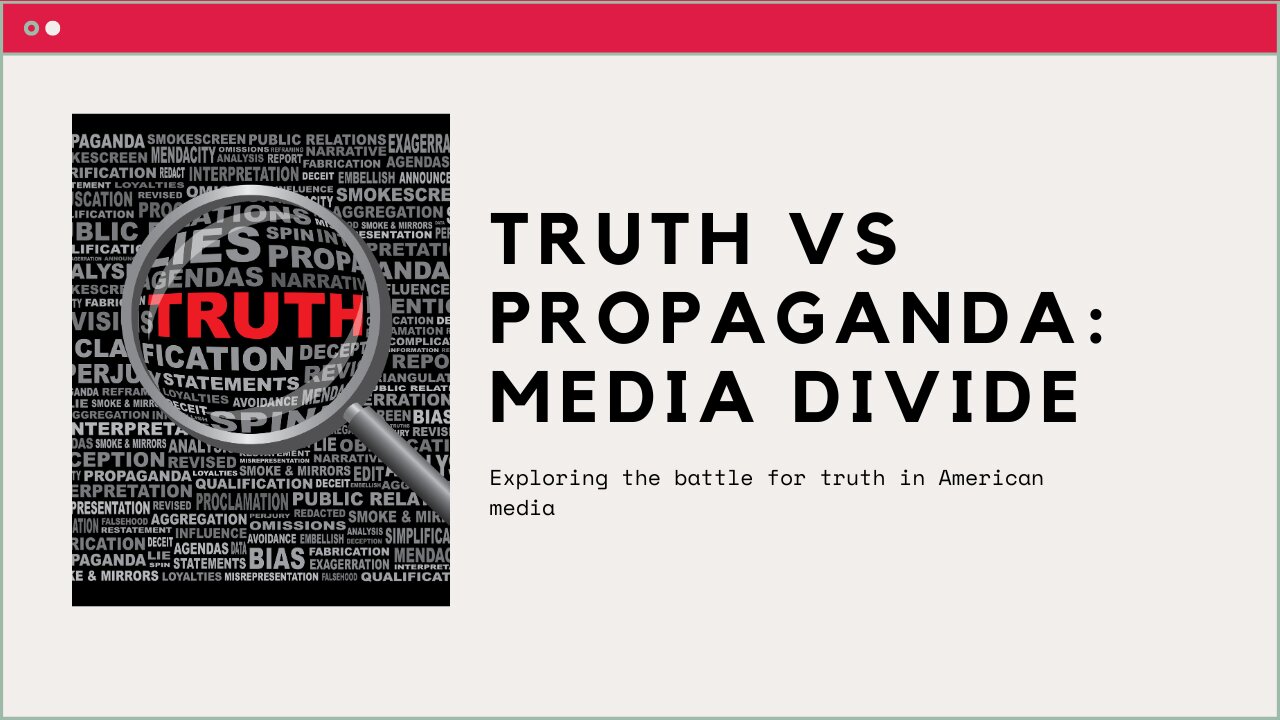Media organs in the United States today – and the Western world – divide into two opposing camps. One camp pretended, for at least a century and a quarter, to search for and present the truth. In fact they were always pushing the propaganda flavor of the month, to serve various ultimate masters. But lately another kind of organ has arisen, expressing outrage not only at their counterparts’ propagandist activities but also at the misdeeds, mismanagement and malfeasance of statecraft that those traditional organs are actually apologizing for. Tellingly, never before has the divide been as acute as in the treatment, by both camps, of the 2024 election.
History of the mainstream media
The mainstream media, or the mainline media, go back to the nineteenth century. Before then, newspapers never pretended to be anything other than Party organs. That was especially true during the administration of John Adams, which put journalists in jail under the Sedition Act. During the War Between the States, the Federal side had its media divide, between pro- and antiwar establishments.
Shortly before the Spanish-American War, came big-city papers, most of whom would pretend to be objective. William Randolph Hearst indulged in sensationalism, as did his rival, Joseph Pulitzer. (The Hearst family became the dynasty that ran the San Francisco Examiner.) But men like Arthur L. Ochs (The New York Times) and Frank Hatton and Beriah Wilkins (The Washington Post) expertly put on the veneer of objectivity, almost as if they invented it. But all the big-city mainline papers were Democratic Party rags, as much as they pretended otherwise.
The inventions of radio and television merely introduced two new channels of dissemination of propaganda. Not until Watergate, however, would “the news” start its slow march to domination of programming.
The Obama administration introduced a new wrinkle: vetting of media content by a government office. Jeremy Peters admitted this in July of 2012. He was speaking mainly of campaign offices, but government censorship offices existed then, too. From “quote approval” to the Censorship Industrial Complex we know today, was a small step.
An alternative media
But beginning during the Clinton administration, an alternative media camp began to form. Joseph L. Farah’s WorldNetDaily was one of the first organs. In fact, when Jeremy Peters sheepishly admitted the role of “quote approval,” Farah roundly criticized him. But not Peters only, but all the rest of the conventional media personalities who said – nothing.
More broadly, Farah said something that illustrates the current media divide as no other quote can.
What this shocking story reveals is that even I – one of the kingpins of the new media and a refugee from the state-controlled spin machine – underestimated the utter and total corruption of the euphemistically called “mainstream press.”
Take two things away from that quote:
The old media is a “state-controlled” and “utter[ly] and total[ly] corrupt” “spin machine,” and:
The new media is a place of refuge from the old – and a place that respects the truth for real.
But don’t get the idea that only conservatives could object to “quote approval” and other news-management techniques. Farah had in his stable one Ellen Ratner, a “progressive” herself, who howled with as much outrage as Farah felt. She closed with this:
Helen Thomas gave me great advice when I first arrived at the White House. She said, "Ellen, a free press is necessary for democracy, and remember to never do anyone's bidding."
It seems that many in the news media are happy to do politicians' and government's bidding in exchange for access.
That kind of “journalism” will signal the end of our democracy faster than a rigged election. We don't need it. Americans don't want it. And it will ruin our free press – as well as our country.
Ellen Ratner doesn’t seem to have written anything since 2019. So CNAV cannot know how she felt about the Election of 2020, or whether she considers that election fair or rigged. But about media peddling spin instead of truth, she was dead on target twelve years ago. And with so many social media organs being just as willing to be “State actors,” that goes double.
Seven years ago, Joan Swirsky accused the old-line media of prostituting itself to the government. This begins, she says, on the individual level:
Ms. Wide-Eyed Idealist and Mr. Upwardly-Mobile Go-getter apply for jobs at their local or national radio or TV stations or newspapers. Or they “know someone” who facilitates an interview that leads to being hired. A good example of the latter is the nice-enough but remarkably untalented Chelsea Clinton, who landed an astronomically high-paying job with NBC that, mercifully for viewers, lasted about a minute.
Once hired, these wannabe journalists are thrilled to be on their way, until it dawns on them that their bosses don’t give a damn about anything they think or believe or want to convey to a hungry public. For most media employees, it soon becomes clear that they are expected—indeed, mandated—to reflect and convey the belief systems of their employers. And unless they do that, they are completely dispensable!
The most divisive figure of all: Donald J. Trump
No elected official, or candidate for office, has done more to demonstrate the great media divide than Donald J. Trump. In 2015, he rode down an escalator in the lobby of Trump Tower and announced his candidacy for the Presidency. The effect was the same as dropping an outsize lump of pure metallic sodium into a beaker of water. Media editors, personalities, and consumers are still dodging flying glass from the metaphorical explosion.
https://rumble.com/embed/v3vwhzd/?pub=4teej
When Joan Swirsky criticized the media seven years ago, Trump was eight months in office. Unfair criticism of his alleged lack of response to Hurricane Harvey was the order of the day. But even before then, the media tried in three ways to destroy Trump. First they vilified him, then they skewed their polling. Then after he won the Election of 2016, they played up every attack against him as if it were fact-based. All without result.
After those failures, they held their Transition Integrity Project, preparing even to provoke a civil war if Trump won. They recommended that California, Oregon and Washington State threaten to secede, and Michigan and Wisconsin field alternative elector teams. Instead the globalists rigged the election – so Ellen Ratner perhaps should have been careful of her metaphors.
Attentat
So then someone tried to take Trump’s life. Whether the Secret Service acted with malice, or breathtaking incompetence, is a debate for another day. The conventional media definitely reacted with malice. First they denied that the attack was an attack. One media critic and two U.S. Senators sampled the immediate headlines for X.
https://x.com/DrewHolden360/status/1812261854783434752
https://x.com/marcorubio/status/1812257847427629479
https://x.com/marcorubio/status/1812259108973912261
https://x.com/marcorubio/status/1812260711290073254
https://x.com/HawleyMO/status/1812259580123947462
https://x.com/HawleyMO/status/1812257571597648238
Loud noises? Popping noises? Trump fell to the stage? These are not serious headlines at all, but puerile middle-school level taunts. They come from CNN, NBC, USA Today, and the Associated Press. Later they were saying that if anything hit Trump, it was flying glass (not metaphorical this time). (FBI director Christopher Wray would repeat that canard before the House Oversight Committee.) Adam Guillette, head of Accuracy in Media, blamed the media for a crisis of faith in them.
Illustrating the divide
Recent incidents have highlighted the divide; these involve coverage of the campaign. Recently, CNN Anchor Brianna Keilar cast doubt on the military valor of Sen. J. D. Vance (R-Ohio), Trump’s running mate. At issue: Vance acknowledges that he didn’t take enemy fire in actual combat. But he was still deployed to a combat zone, with everything that entails. As Maj. Shawn Haney USMC (retired) made clear.
https://x.com/TrumpWarRoom/status/1822000612336140449
Lawrence O’Donnell of MSNBC decried that any network covered Trump’s impromptu press conference. “It was 2016 all over again!” he ranted.
https://x.com/atrupar/status/1821730651977945228
Megyn Kelly castigated the media’s complicity in an attempt to rebrand the Harris-Walz ticket as “joyous.” She interviewed Andrew Klavan, who had his own harsh critique:
https://x.com/MegynKellyShow/status/1821644048329011677
Friday night, Harris and Walz held a rally at the Desert Diamond Casino and Arena in Glendale, Arizona. Attendance was so sparse that Harris ordered the empty mezzanine draped in black to hide the empty seats. Incredibly, X influencer William LeGate shared video of the event – and described it as a Trump event. His post ran:
Trump has ‘ordered’ his team to literally cover up entire levels of venues he’s unable to fill with black cloths – to make it appear as if there aren’t thousands of empty seats.
Other influencers didn’t seem to know whether to laugh or cry.
https://x.com/_johnnymaga/status/1822263888626258379
https://x.com/JackPosobiec/status/1822293595358900713
https://x.com/quickdrawshirts/status/1822295168973701627
https://x.com/BasedSavannah/status/1822303174109151299
And last: former YouTube CEO Susan Wojcicki died recently from cancer.
But users might remember her as the architect of YouTube’s complex – and draconian – Community Guidelines.
https://x.com/ExposeDarkDeeds/status/1822152683911791065
Analysis
As everyone can see, the United States, at least, has two kinds of media. Some organs, and their personnel, are interested in the truth. Others, who have existed for much longer, have lost whatever interest in the truth they ever held. Their coverage of three elections, all involving Donald Trump, illustrate that divide. Every customer of especially news media must ask himself: which camp has the reliable organs? But before asking that question, each customer must ask himself what he relies on media for. Do you want the truth, or have you decided on what you want to hear, and would rather have that? That’s almost as important a decision as the one you will make in the voting booth.
Link to:
The article:
https://cnav.news/2024/08/11/news/media-divide-truth-propaganda/
Video:

Sodium reaction with water (demonstration)

Initial media reaction to assassination attempt:
https://x.com/DrewHolden360/status/1812261854783434752
https://x.com/marcorubio/status/1812257847427629479
https://x.com/marcorubio/status/1812259108973912261
https://x.com/marcorubio/status/1812260711290073254
https://x.com/HawleyMO/status/1812259580123947462
https://x.com/HawleyMO/status/1812257571597648238
Major Haney challenges CNN on Vance’s valor:
https://x.com/TrumpWarRoom/status/1822000612336140449
Aaron Rupar embeds video of Lawrence O’Donnell’s rant:
https://x.com/atrupar/status/1821730651977945228
Megyn Kelly and Andrew Klavan interview:
https://x.com/MegynKellyShow/status/1821644048329011677
Reaction to William LeGate’s since-deleted mistake:
https://x.com/_johnnymaga/status/1822263888626258379
https://x.com/JackPosobiec/status/1822293595358900713
https://x.com/quickdrawshirts/status/1822295168973701627
https://x.com/BasedSavannah/status/1822303174109151299
Remembering Susan Wojcicki:
https://x.com/ExposeDarkDeeds/status/1822152683911791065
Declarations of Truth X feed:
Declarations of Truth Locals Community:
https://declarationsoftruth.locals.com/
Conservative News and Views:
Clixnet Media





















